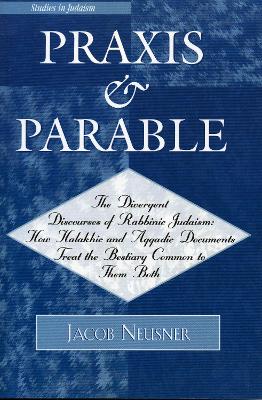Judaism's two native categories, narrative theology and law (also known as parable and praxis or Aggadah and Halakhah) form two distinct modes of discourse. The one expounds norms of attitude and belief, the other, norms of action and behavior. Each possesses its own modes of thought, topical program, and medium for expression. Joined together, they create a remarkably coherent statement. Any understanding of Rabbinic Judaism depends on a theory of how these two modes of thought and expression relate to form a single cogent system. In Praxis and Parable, author Jacob Neusner explores how that single topic "the morality and law of the animal kingdom" in the Rabbinic canon of the formative age, like all other ubiquitous topics encompassed in that canon, produces two distinct vocabularies of analysis. These distinct realms of thought and speech on the same subject yield two separate classifications of the order of nature and society. How these two mediums of expressions intersect and diverge in a single case permits the general characterization of the two Judaic modes of discourse. The general characterization of the interplay of Halakhah and Aggadah defines the interior dynamics of Rabbinic Judaism and forms the principal task of systemic analysis of that Judaism. In the Rabbinic manner, this book works from the case to the rule.
- ISBN10 0761833404
- ISBN13 9780761833406
- Publish Date 10 January 2006
- Publish Status Active
- Publish Country US
- Imprint University Press of America
- Format Paperback
- Pages 296
- Language English
